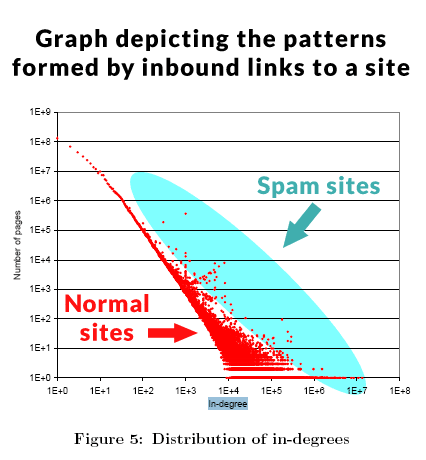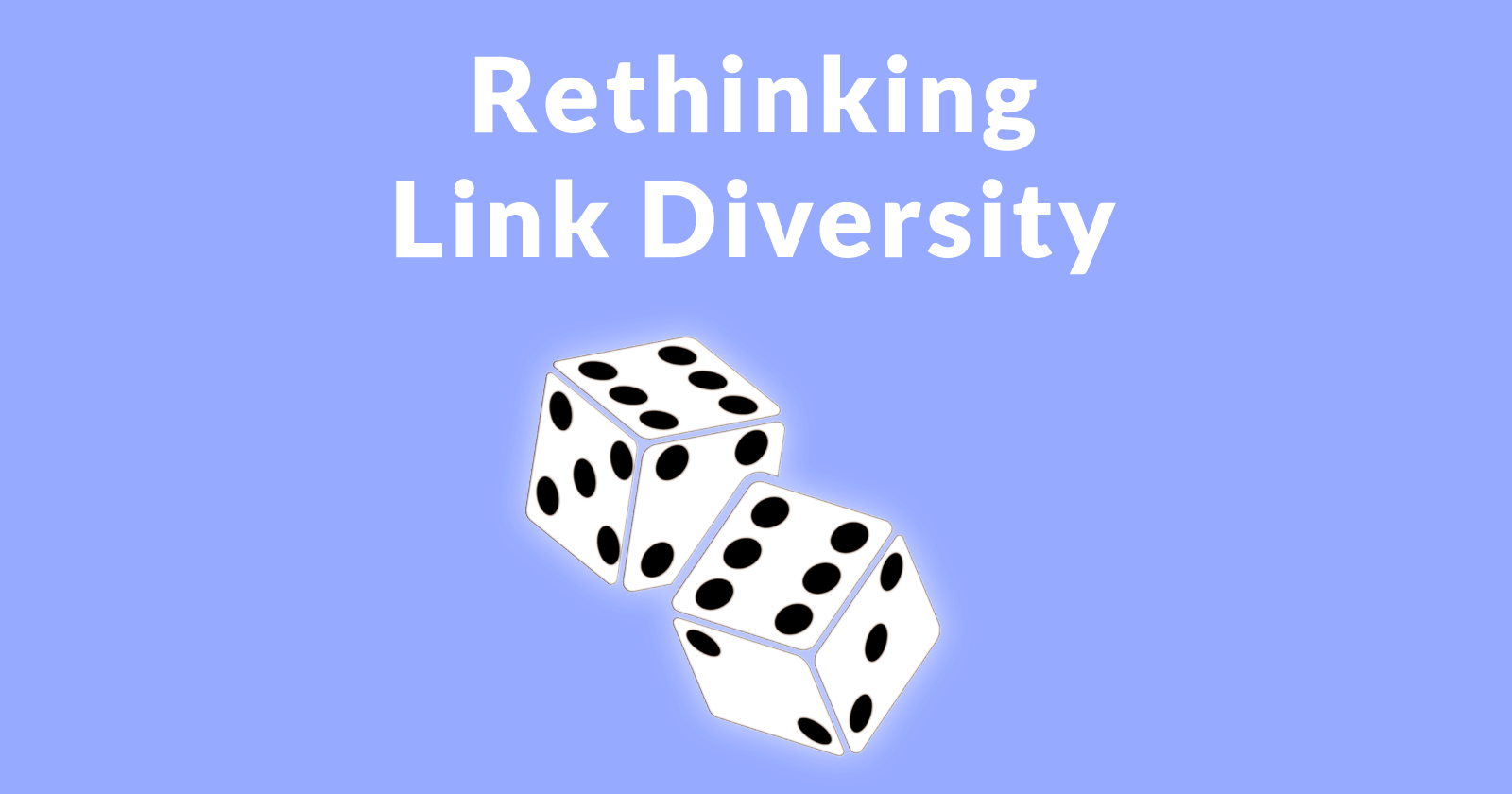The concept of Link Diversity is a concept that is casually accepted without thinking about it. But nothing should be accepted without thinking about it. This is not suggesting that obtaining the same kind of link over and over is fine. It may be helpful to consider what role link diversity plays in ranking a site and whether it is still relevant to SEO in 2018.
Reality Check on Link Diversity
One of the SEOs who has a strong reputation for understanding search engines is Ammon Johns. So naturally I turned to him for a reality check.
I shared my doubts about link diversity with Ammon.
Other than identifying link manipulation, the criteria for links is consistently about relevance, not diversity.
Am I missing something?
Ammon Johns replied:
Not that I’m aware of, and I agree.
The whole diversity thing is based on a misunderstanding of the basic old principles of not having an identifiable pattern or footprint to manipulation.
I think it just got dumbed down over a decade, like the children’s campfire game of telephone.
Let’s face it, even the concept of relevancy is massively misunderstood and misquoted. The bigger the scale of the link network, the harder it becomes to hide.
I always describe the way Google looks at links as being like Six Degrees of Kevin Bacon. It’s all about how many links from a cast-iron authority site they know can’t be bought or manipulated.
Like peeling a sticker, once you have a purchase on a corner, the whole lot comes away.
Ammon Johns describes Google’s approach to catching link spam as like peeling a sticker. Once you have a grip on a corner, the whole thing peels away.
To be honest, there are even times when I think the engines aren’t even worried about diversity of ownership. When Apple launches a new product or service and promote it from their existing authority domains, I’m certain that’s a plus, not a minus.
Definition of Link Diversity
Link diversity is a strategy of obtaining inbound links from different kinds of pages ( for example directories, articles, news links). Link diversity also means obtaining links from a variety of domains such as .edu, .com, .net and so on.
And finally, link diversity means obtaining a variety of anchor text in links and kinds of links, such as “do follow” links (links that pass link equity such as Pagerank) and “no follow” links (links that don’t pass link equity such as PageRank).
The idea is that obtaining inbound links with diversity will keep a site’s backlink patterns within a normal range so that the do not appear to be spammy.
Link Diversity Makes Backlinks Look Natural
I encountered several people in Facebook groups invoking the phrase link diversity to justify why it’s important to obtain no follow links. The context was that obtaining a diversity of links, including no follow links, makes your backlink profile look natural. The idea is that naturalness will help your site escape detection from statistical analysis algorithms.
What is Statistical Link Analysis?
Statistical analysis was first confirmed to be in use in 2005 at Pubcon New Orleans. Statistical analysis studies characteristics of inbound links and outbound links. The characteristics analyzed can be factors such as how many outbound links on a page, how many inbound links to pages within a site and so on.
When those characteristics are graphed, the sites containing various percentages tend to align along a gentle curve, except for spam sites. Spam sites cluster outside of that gentle curve. Those clusters are called outliers, because they exist outside of the normal ranges.
 This is a statistical analysis graph depicting the inbound link patterns. The sites in red have “natural” link patterns. The outliers in blue are spam sites.
This is a statistical analysis graph depicting the inbound link patterns. The sites in red have “natural” link patterns. The outliers in blue are spam sites.The above image is from an important research paper titled, Spam, Damn Spam, and Statistics (PDF). It illustrates how statistical analysis is able to spot patterns in links. This kind of analysis is what gave birth to the idea of obtaining a “natural” looking backlink profile.
Because statistical link analysis can spot patterns in linking relationships, the SEO industry responded by recommending obtaining a diversity of inbound links. So instead of obtaining links exclusively from link directories, they suggested to add links from other sources as well, so that the backlink profile would not stand out as different from normal link profiles. This may be the origin of the idea of link diversity.
Is it Important to Look Natural?
The whole idea of “looking natural” springs from the revelation in 2005 that Google has been using statistical analysis to see if a link profile is statistically normal or statistically different.
Sites that engaged in spam had statistical link profiles that were different and easily spotted. The idea is that the manipulated links would be harder to catch if the statistical link profile matched the average link profile.
Thus, an unnatural amount of keyword optimized anchor text would be offset by a larger amount of brand name anchor text. This is called an anchor text ratio. This is the difference between the amount of keyword optimized anchor text and non-optimized anchor text.
Modern Link Analysis
Modern link analysis does things like use a seed set of trusted sites and from there Google calculates the distances from those trusted sites to a site that wants to rank for a certain keyword phrase.
In 2005-era statistical analysis a spammer could overwhelm the unnatural links with non-optimized links and appear to be statistically normal.
With modern link analysis there is no such hiding place. The bad links can not hide under the volume of regular non-optimized links. This new way of finding spam, called Penguin, changes the definition of what a “natural” link profile looks like. Link diversity has no place in that definition.
In an algorithm that’s measuring the distance between a trusted site and another site, there is no yardstick of naturalness. A link is measured by the quality of the sites linking to it. Link diversity simply does not matter in that scenario.
This is why I came to the conclusion that link diversity should probably be put to the back of the line of SEO factors to worry about, if not discarded entirely.
Google Link Diversity Research and Patents
The only instance in which search engines prefer diversity is with regard to relationships between sites. Identifying ownership information helps catch links that are being manipulated.
If one person owns a network of a hundred sites, patterns in the linking, as well as whois and hosting IP information could be used to identify relationships between sites that are linking to each other and catch link selling and spamming.
But other than identifying link manipulation, the criteria for links is consistently about removing the influence of irrelevant links so that only the relevant links remain as part of the ranking process. This is a process that can be described as removing the noise in order to identify the signal.
As far as I know, aside from site ownership information, there are no research papers that use “link diversity” as a ranking factor or an area of research. Link analysis is largely about removing noise from the link data so that only the signal is left.
So it’s safe to say that there is no research or patents that use the diversity of links as any kind of ranking signal.
Should Link Diversity Be Dismissed?
It’s my opinion that the concept of link diversity can to a certain extent be safely ignored. This doesn’t mean that it’s okay to obtain a steady diet of directory links. Poor link building is still poor link building.
There are two reasons to dismiss the idea of link diversity. The first reason is that link diversity has become an excuse to justify poor link building practices. Those who have a vested interest in promoting low quality links will raise the link diversity flag to justify the poor quality links they obtain for clients.
The second reason I believe the concept of link diversity should be retired is because search engines have changed since 2004. There is no reason to insist on a diversity of inbound links because of how search algorithms work today.
Does it really matter if a site has a mix of links from .edu, .org and .com sites? If you research the backlinks of top ranking sites you’ll find that this kind of diversity does not exist.





